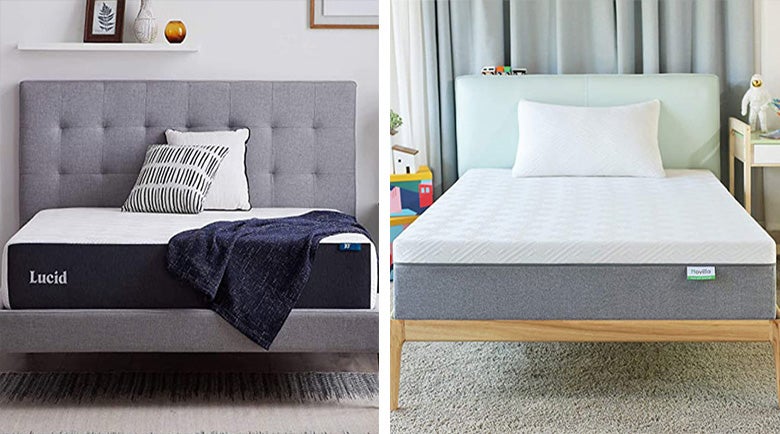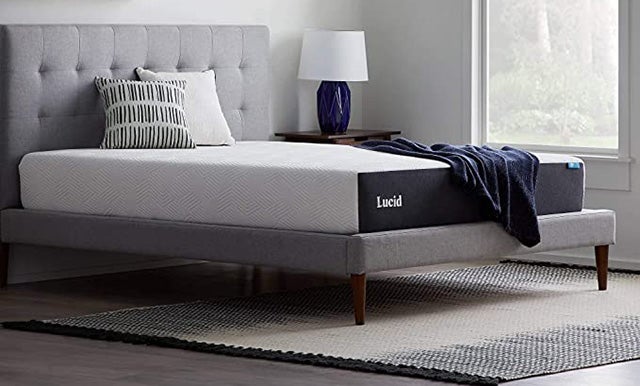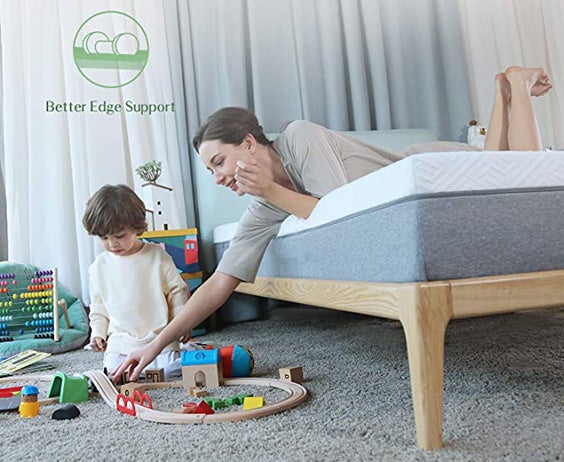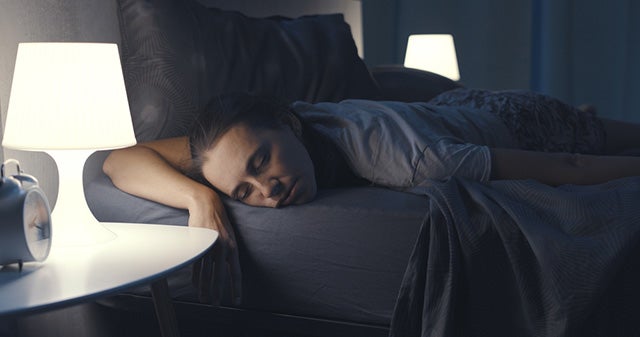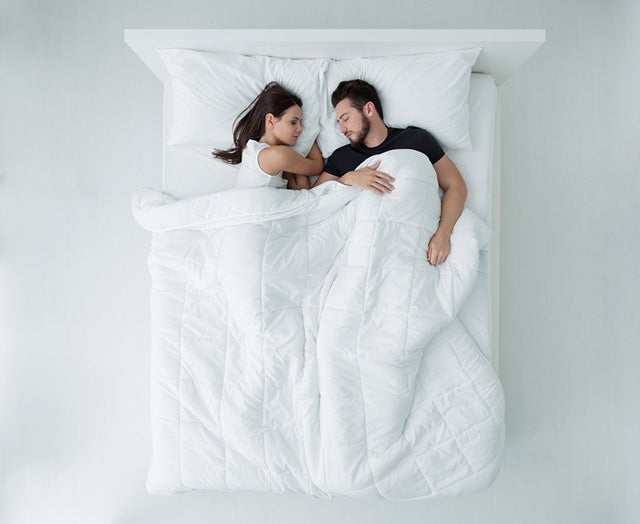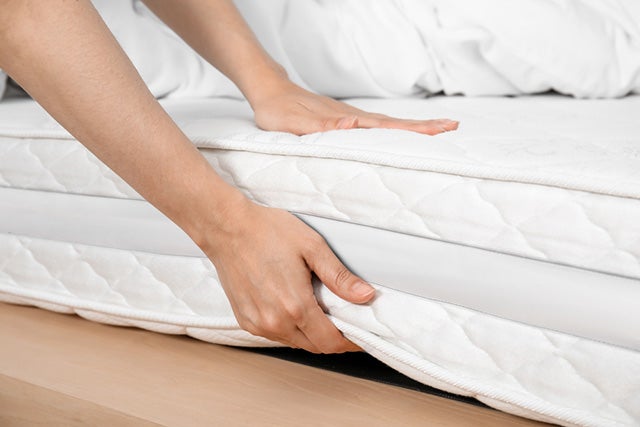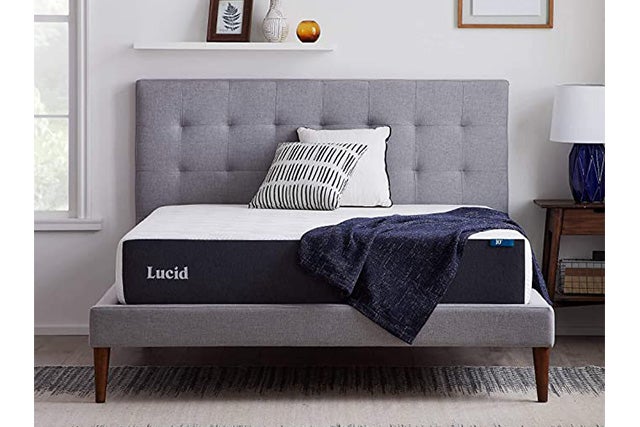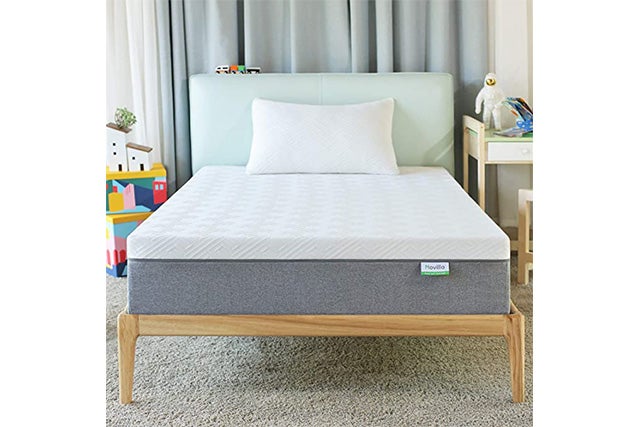Do you keep hearing about mattress firmness but are unsure what that means? Mattress choice is a personal matter, so there are no right and wrong choices here. Instead, we can tell you about firm vs medium mattress choices to help you make your own.
Firm vs Medium Mattress Comparison Table
| Medium Mattress | Firm Mattress | |
| Firmness Rating | 4 to 6 | 7 to 8 |
| Materials | Latex, foam, innerspring, hybrid | Latex, foam, innerspring, hybrid |
| Best Sleeping Position | Side, combo | Back, stomach |
| Best Weight Category | 230 pounds or less | More than 230 pounds |
Which Is Best: Firm or Medium Mattresses?
There is no absolute best when discussing mattress firmness levels because each sleeper has different needs and requirements. A mattress that works for a 120-pound side sleeper will not be the best choice for a 230-pound back sleeper. That’s why understanding mattress firmness levels and what your body needs is essential before investing in a new bed.
When referring to mattresses, the term “firmness” describes how soft or firm the bed feels to different people who use it. The top layers (which are known as comfort layers) will directly impact how soft or firm a mattress feels.
To make it easier for the buyer to understand the firmness of a mattress, the industry invented the firmness scale. This scale ranges from 1 to 10, where 1 describes a very soft mattress and 10 is a very firm one. 4 is the rating given to a medium soft mattress, 5 is for a medium mattress, and 6 is for a medium-firm one. A firm mattress is usually rated with a 7 or an 8.
Pros and Cons of Firm Mattresses
While pros and cons attribute to firmness levels are a subjective matter, there are a few general benefits that we can extract from a firm bed:
A firmer mattress will improve your blood circulation. It forces the body to rest in a position that doesn’t put that much stress on arteries, veins, and muscles.
- Firm beds will not allow your lower back to sink into the surface, which grants more body support.
- They can help improve sleep posture and prevent lower back pain.
- A firm bed will distribute your body’s weight evenly across the surface, so you won’t sink deep into the bed.
- It’s easier to switch sleeping positions when you have a firm mattress.
Naturally, there are also some downsides to firm mattresses, but note that they are all circumstantial (a downside for a sleeper might turn out to be a benefit for another):
- They are uncomfortable for petite sleepers.
- They can cause pain in the hips and shoulders for side sleepers because the mattress doesn’t have enough give.
- Firm beds are not suitable for people with existing back problems because it makes the pain even worse.
Pros and Cons of Medium Mattresses
Just like with firm mattresses, medium ones also have their shares of pros and cons. Some of the advantages of a medium mattress include:
- A mattress that has a medium firmness will respond quickly to the movements of your body while also gently caressing its curves, thus reducing pressure points.
- Even though medium mattresses are on the softer side, they still have a sufficient amount of firmness to ensure that sleepers do not simply sink into them.
- It suits a wider sleeper base because the firmness rating is right in the middle.
Some of the drawbacks to consider when looking at medium mattresses are:
- They don’t provide enough support for sleepers who have constant back pain problems.
- Heavy sleepers will sink into the mattress too much so their spine stays misaligned.
Who Should Use a Firm Mattress?
Since a firm mattress is designed to prevent body sinkage, it’s mostly suitable for heavyweight sleepers (those who weigh more than 230 pounds). It’s a good choice for stomach sleepers because their waist area will not sink into the best, forcing the spine into an unnatural position.
Who Should Use a Medium Mattress?
Since a medium mattress is right in the middle of the firmness scale, it works well for combination sleepers because it provides a decent amount of support for multiple sleeping positions.
It’s also a good middle ground for couples that have different firmness preferences and need to settle on just one mattress. If you’re not sure what mattress firmness is right for you or you need a guest bed to accommodate different people, a medium mattress is also your best bet.
How To Tell Which Mattress Type Is Best for You
In order to tell if a mattress provides the right firmness level for your body, check to see whether or not you experience any pain or discomfort when you sleep on it. This will help you decide.
If the pressure areas on your body are consistently in pain when you lie down on your mattress, the bed is surely too firm for you. People who sleep on the side shouldn’t wake up with hip or shoulder aches. If they do, it means they need a softer mattress.
Those that wake up with back pain on a regular basis could be sleeping on a mattress that’s too soft for them. If you tend to sleep on your stomach, you may find that your shoulder and beck are in constant pain when you wake up.
This is an indication that your mattress is excessively soft. The inability to properly rest on your mattress and trouble getting out of bed are two other issues that might arise from having a mattress that is too soft.
There are two important things to consider if you want to tell which mattress type is best for you: your favorite sleeping position and your weight.
Sleeping Position
Your sleeping position can be used to determine the level of firmness that will be most suitable for their needs. Depending on how you choose to sleep, different pressure spots on your body will require different levels of support and comfort so that you can get the most rest.
- Side sleepers need a soft to a medium mattress that contours to the hips and shoulders.
- Back sleepers need proper spinal alignment, so a medium or a medium-firm mattress usually works best for them.
- Stomach sleepers need a medium-firm or firm bed to prevent the waist area from sinking into the bed’s surface.
- Combination sleepers are better off with a medium mattress because it’s known to accommodate most sleeping positions.
Body Weight
How much your weight is going to make a world’s difference when picking a new mattress:
- If you weigh less than 130 pounds, you need a soft mattress because you are lightweight enough to prevent excessive bed compression.
- For those who weigh between 130 and 230 pounds, it’s better to choose a mattress firmness based on the recommendations given in “Sleeping Position”.
- For those who weigh more than 230 pounds: pick a firmer mattress because you need the extra support.
Best Firm Mattress Suggestion
— Lucid Bed
One of the best firm mattresses currently listed on Amazon is the 10-inch Lucid bed. It is a foam mattress that sports a gel foam layer to combat some of that heat retention that people dread in memory foam beds.
You can choose between various size options ranging from twin to split king. You can also pick between multiple firmness levels if you like the mattress’s construction but don’t particularly want a firm bed.
Best Medium Mattress Suggestion
— Novilla Mattress
Introducing another gel memory foam mattress that works for side and combination sleepers. You can choose between two thickness levels and six different mattress sizes.
This bed is designed with a comfort layer that measures 3 inches in thickness and delivers gel infusion for a cooler sleeping experience. It also features 2 inches of comfort foam underneath, 3.5 inches of air-circulating foam, and 3.5 inches of high-density base foam.
You might be interested in: 15 Mattress Types on the Market
The Verdict
Picking the best mattress needs to take into account two main factors: body weight and favorite sleeping position. Sometimes, you’ll have to understand more about how you sleep before buying a new bed. The decision to invest in a new mattress should not be taken lightly, since it’s a long-term investment that determines the quality of your sleep.
Photo credit: Stokkete/Shutterstock;
Stock-Asso/Shutterstock;
New Africa/Shutterstock
